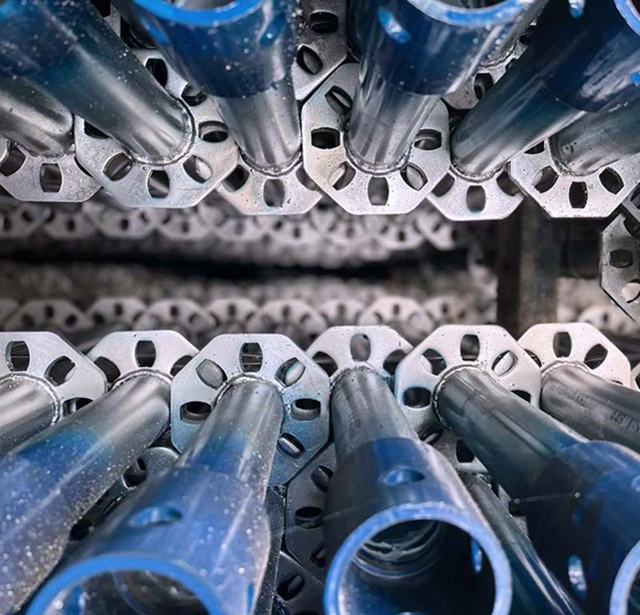How to Inspect and Maintain Octagonal Scaffolding Regularly?
Regular inspection and maintenance of octagonal scaffolding are essential to ensure its safety and proper function. Here are the steps and considerations for octagonal scaffolding inspection and maintenance.
Before using the octagonal scaffolding , we should make a visual inspection on its components. Examine all octagonal scaffolding stands for any signs of damage such as dents, cracks, or bends. Even a small dent can weaken the pole's structural integrity and affect the overall stability of the scaffolding. Check the ends of the scaffolding poles to ensure they are not deformed, as this can impact the proper connection with other components.
Inspect the connectors, such as the scaffolding couplers. Look for any signs of wear, such as grooves or abrasions, which might indicate that the connection is not secure. Check that locking mechanisms like pins or clips are in good working condition and not damaged or missing.
Examine the diagonal braces for any signs of distortion or damage. The braces play a crucial role in providing lateral stability to the octagonal scaffolding. Make sure they are properly attached and that the connections are tight.
Verify that all the necessary components of the octagonal scaffolding are present. This includes the correct number of scaffolding poles, diagonal braces, scaffolding planks, and safety accessories such as guardrails and toe-boards. A missing component can compromise the safety and functionality of the scaffolding.
While using octagonal scaffolding, we should periodically (at least once a day during continuous use) visually inspect the scaffolding. Look for any signs of movement or shifting of the structure. This could include misaligned poles, loosened connections, or sagging platforms.
Check for any new damage that may have occurred during use, such as impacts from tools or materials. If workers notice any unusual noises or vibrations while working on the scaffolding, it should be inspected immediately to identify and address the cause.
Ensure that the scaffolding is not overloaded. Keep an eye on the amount of tools, materials, and the number of workers on the scaffolding. If it appears that the load is approaching the maximum capacity, take steps to redistribute or reduce the load to prevent overloading and potential structural failure.
After using, remove any debris, dirt, or construction materials from the scaffolding. Debris can accumulate in the connections and affect their performance over time. Use a broom or brush to clean the platforms and a compressed air gun (if available) to blow out any dirt from the connectors and braces.
Conduct a more detailed inspection of the components. Check for any signs of wear and tear that may not have been noticeable during the pre-use or during-use inspections. Replace any damaged components immediately. For example, if a pole has a small crack that has developed during use, it should be replaced rather than repaired.
When storing the octagonal scaffolding, ensure it is in a dry and protected environment. If possible, disassemble the scaffolding completely and store the components in a way that prevents them from being damaged. For example, stack the poles flat to avoid bending and store the connectors in a container to prevent them from getting lost or damaged.

评论
发表评论